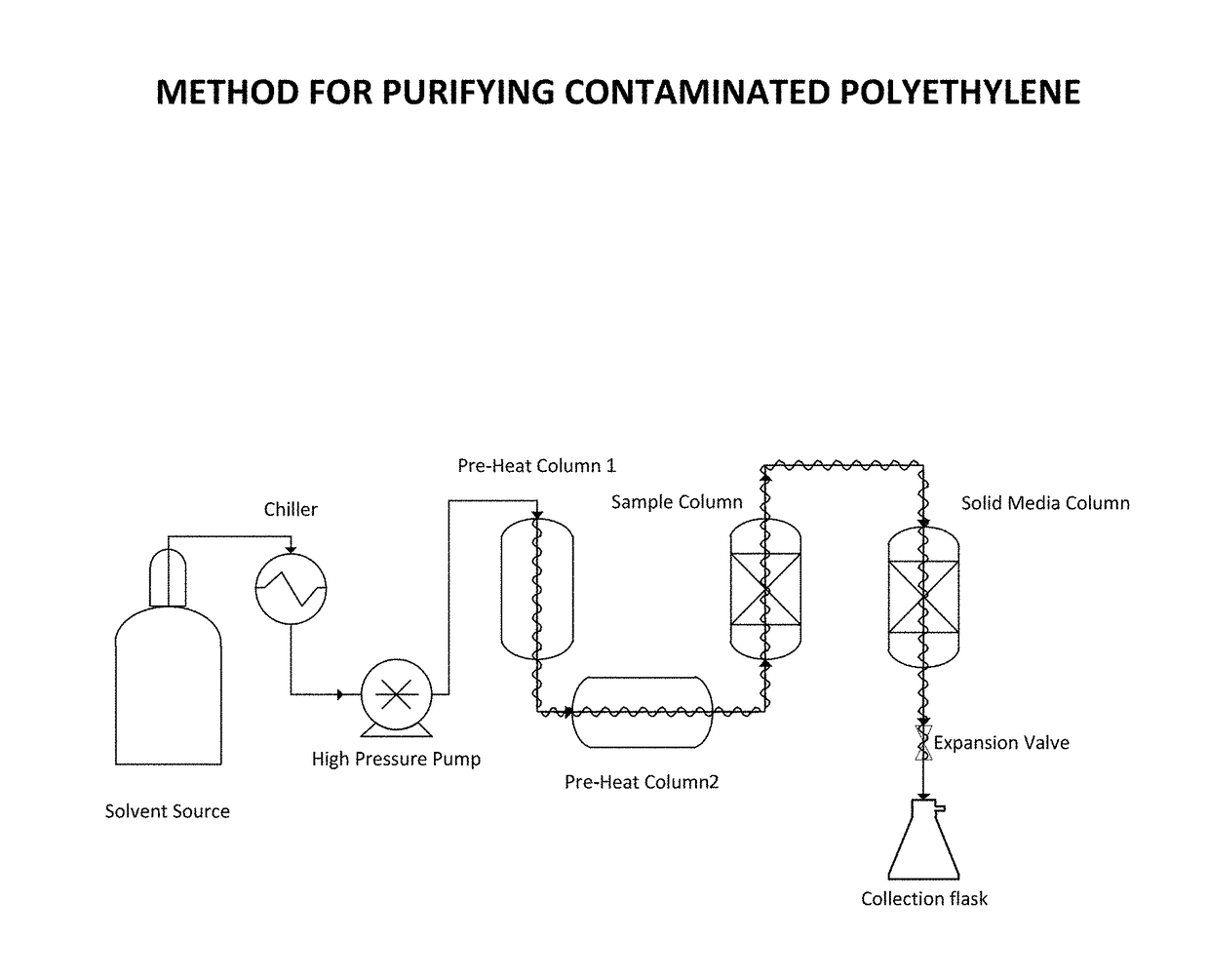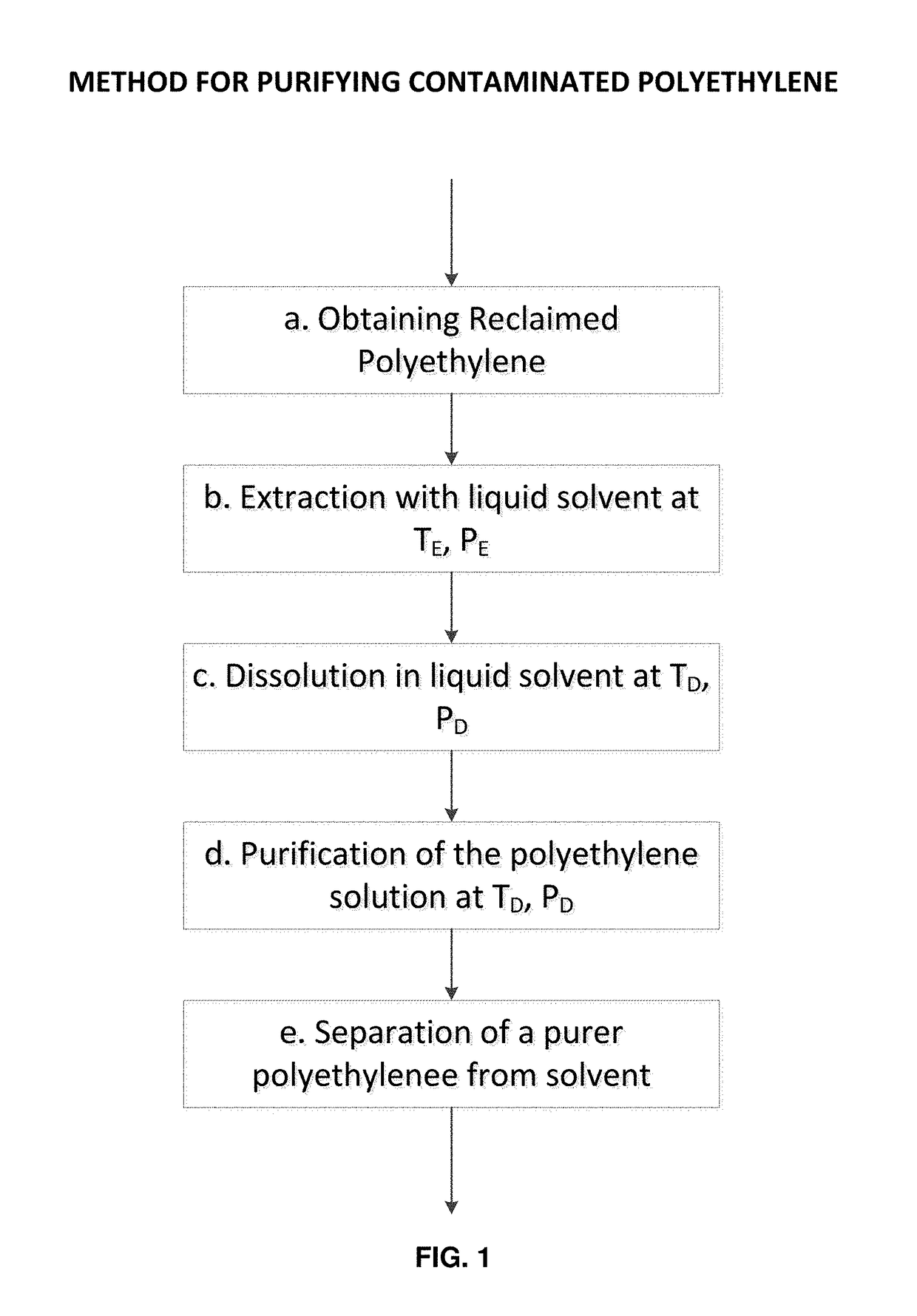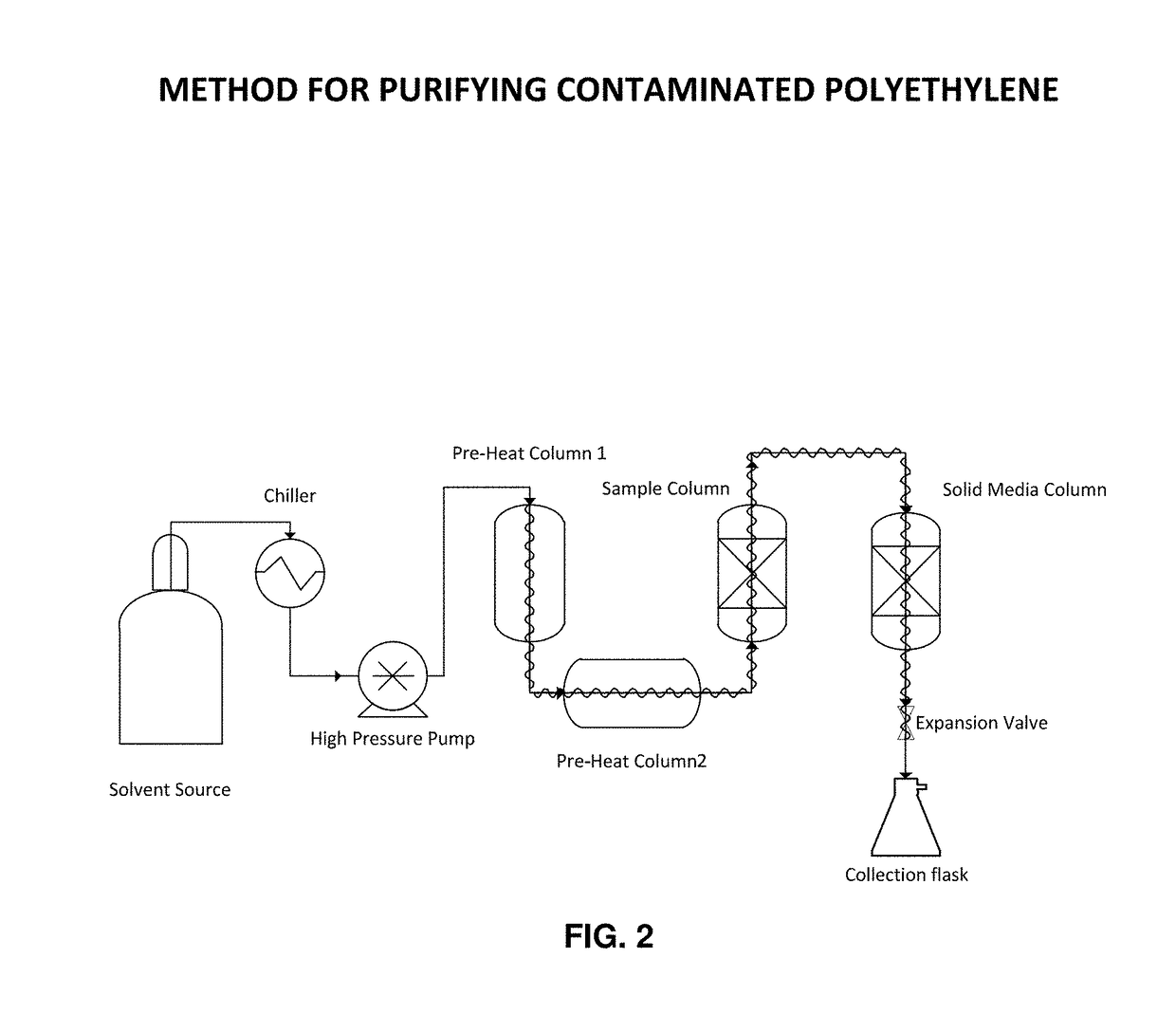Method for purifying contaminated polyethylene
a polyethylene and polyethylene technology, applied in the field of purifying contaminated polymers, can solve the problems of unsightly and potentially harmful ecosystems, millions of tons of plastic waste generated every year, and the final reprocessed pellet remains highly contaminated with unwanted waste impurities, such as spoiled food residues and residual perfume components
- Summary
- Abstract
- Description
- Claims
- Application Information
AI Technical Summary
Benefits of technology
Problems solved by technology
Method used
Image
Examples
example 1
[0086]A sample of post-consumer derived recycled high-density polyethylene was sourced from a supplier of recycled resins. The post-consumer recycled polyethylene was classified as “natural color” and originated from the United Kingdom. The as-received pellets were characterized using the test methods disclosed herein and the resulting data are summarized in Table 1. The purpose of this example is to show the properties of a representative post-consumer derived recycled polyethylene resin before being purification.
[0087]The pellets and corresponding square test specimens were off-white in color as indicated in the L*a*b* values of the square test specimens. The opacity of the sample of example 1 was about 81.61% opaque. A photograph of the square test specimen is shown in FIG. 3 as Example 1.
[0088]This example serves as a representative baseline for heavy metal contamination found in post-consumer derived recycled polyethylene. When compared to the other example, the heavy metal con...
example 2
[0091]The sample of post-consumer derived recycled polyethylene described in example 1 was processed using the experimental apparatus shown in FIG. 2 and the following procedure:[0092]1. 237 g of the polyethylene pellets were loaded into a 1.1 L extraction column pressure vessel with an internal diameter (ID) of 1.75″ (44.45 mm) and a length of 28″ (71.12 cm) that was heated to an external skin temperature of 175° C.[0093]2. Liquid n-butane solvent was pressurized to about 4,500 psig (31.03 MPa) using a positive displacement pump and pre-heated to a temperature of about 110° C. using two heat exchangers before it was introduced to the bottom of the extraction column.[0094]3. The fluid stream leaving the top of the extraction column was introduced into the top of a second 0.5 L pressure vessel with an ID of 2″ (50.8 mm) and a length of about 8.5″ (21.59 cm) that was heated to an external skin temperature of 175° C. The second pressure vessel contained 150 mL of silica gel (Silicycle ...
PUM
| Property | Measurement | Unit |
|---|---|---|
| boiling point | aaaaa | aaaaa |
| pressure | aaaaa | aaaaa |
| temperature | aaaaa | aaaaa |
Abstract
Description
Claims
Application Information
 Login to View More
Login to View More - R&D
- Intellectual Property
- Life Sciences
- Materials
- Tech Scout
- Unparalleled Data Quality
- Higher Quality Content
- 60% Fewer Hallucinations
Browse by: Latest US Patents, China's latest patents, Technical Efficacy Thesaurus, Application Domain, Technology Topic, Popular Technical Reports.
© 2025 PatSnap. All rights reserved.Legal|Privacy policy|Modern Slavery Act Transparency Statement|Sitemap|About US| Contact US: help@patsnap.com



